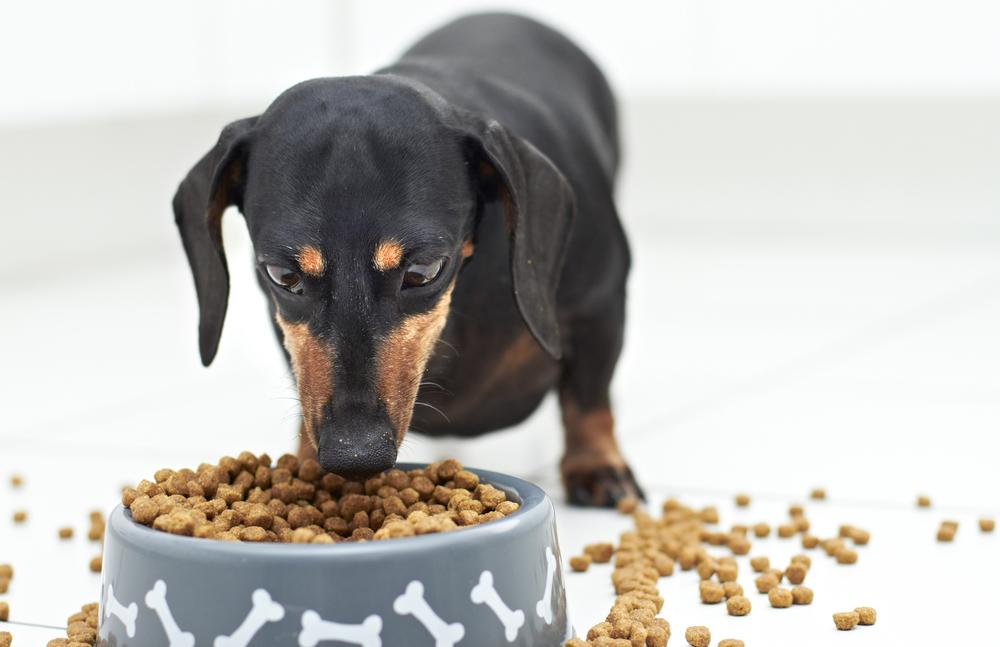All About Dog Food
Every dog owner loves their pet and wants to feed them the highest-quality food. But sometimes, it takes a lot of effort to find the food one’s dog likes and that’s also healthy for them. If one has never owned a dog or another pet, it can be difficult to venture outside what the vet or breeder recommends. When choosing between wet and dry dog food, it is important to consider the dog’s nutritional needs.

1. Convenient feeding and storage
If you’re after a dog food that’s easy to feed your dog, dry dog kibble is the less messy option. Even if Fido is a messy eater, you can sweep away strewn kibbles without much upkeep. However, wet food may produce stains and mess on your kitchen floor. Dry dog food is also easier to measure out meal rations compared to wet canned foods. Dry dog food also dominates when it comes to less food spoilage. Whereas wet canned food can be prone to spoilage in the heat or over long durations.
2. Price-friendly
If you’re after an affordable food option, dry dog food almost always beats wet canned food on price per amount of food you go home with. Dry dog food typically means less waste as well. For instance, you can leave a bowl of dry dog kibble out all day. Whereas wet food will become unpalatable after a few hours left out in the bowl. If you have a small dog, you may not be fazed by cost, however, if your dog is a large breed, the price to ratio cost may be steep to keep Fido in canned vittles.
3. Dental perks
When it comes to Fido’s pearly whites, dry food offers benefits as far as natural plaque cleaning as he or she chews away. Wet food, on the other hand, has been linked to increased plaque buildup in dogs due to the gooey residue left behind. However, if you have a senior dog with tooth sensitivities or missing teeth, wet food may provide a more comfortable dining experience.
4. Food palatability
There’s a reason why Fido comes running when he hears the pop, click of a can of wet dog food opening. Generally, wet canned dog foods are tastier than dry dog kibble because they contain more raw protein, tasty fats (i.e., gravy and added meat flavor), and pleasing texture. If your pooch is a picky eater, you may want to feed them wet food, or top their dry dog food with gravy or meat-based broth to make it more appealing.
5. Nutritionally balanced
When it comes to choosing the most nutritionally-packed option for your pet, wet foods often contain the most water. So if your dog doesn’t drink as much water as he or she should, canned wet food may provide a sly source of hydration for Fido (at 75% water). To compare, dry food only offers about 10% of water. Dry foods tend to contribute to pet weight gain compared to wet foods because they pack more grains (i.e., corn, soy, rice, and wheat) to create that dry food texture. Keep in mind this may lower the overall cost, but can also help your pooch pack on the pounds or develop food allergies/sensitivities (i.e., skin rash or dryness) to grain-based dry foods. To choose the healthiest wet or dry food for you pooch, make sure the ingredients contain zero artificial colors or flavors (i.e., high fructose corn syrup), list a meaty protein source (i.e., chicken, beef, or lamb) among the top 3 ingredients. And finally, seek out dog foods that contain low gains or at least quality whole grains (i.e. sweet potato, barley, brown rice, or corn) and not empty grain by-products (soybean meal or corn gluten meal).